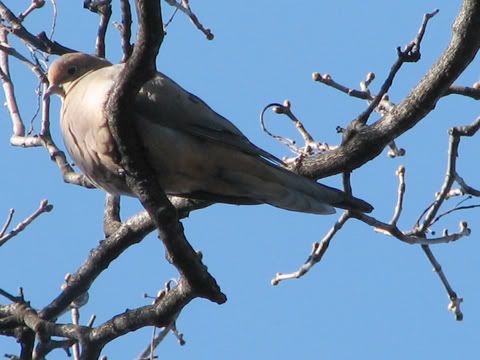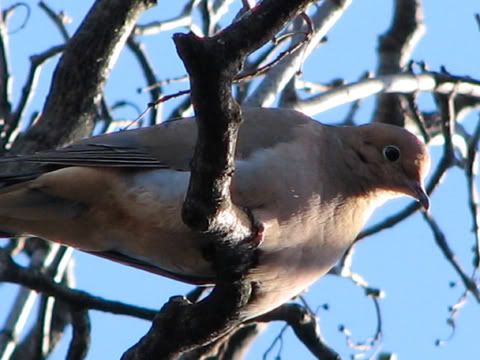365 Urban Species #061: Mourning Dove

photos by cottonmanifesto
Urban species #061: Mourning dove Zenaida macroura
In addition to the feral rock pigeon, almost all urban areas have at least one other wild dove. In Las Vegas you may see the tiny Inca dove; around London you can see the impressively large woodpigeon; throughout Mexico and South America there are various ground-doves and across Europe there are collared doves and turtle doves. In much of North America, near farms, suburbs, and in city parks, you can find the beautiful mourning dove.
Slightly smaller than a rock pigeon, but with a long tapered tail, in flight it can be mistaken for a small hawk or falcon. Perched, its tiny head and plump body, typical dove features, give it away. The mourning dove is one of a few birds that can be identified by the sound of its wings: when a mourning dove flies nearby, its wings whistle in a distinctive way. The bird is named for its sad, low cooing, a sound that is often mistaken for an owl hooting by those hearing it for the first time.
Like many doves, mourning doves feed on the ground. Even when a birdfeeder is offered, they prefer to glean the spilled seed, along with the juncoes. Because the ground is precisely the place where spilled, discarded, and wasted food is generally located, doves are drawn to the messy habits of humans. Some urban doves eat the fruit of ornamental trees, but most, including the mourning dove and rock pigeon prefer the seeds of grasses and weeds. Mourning doves are found in Boston year-round, in pairs, and in mixed flocks with seed-eating songbirds.

Note the subtle light blue and pink tones on the dove's head.